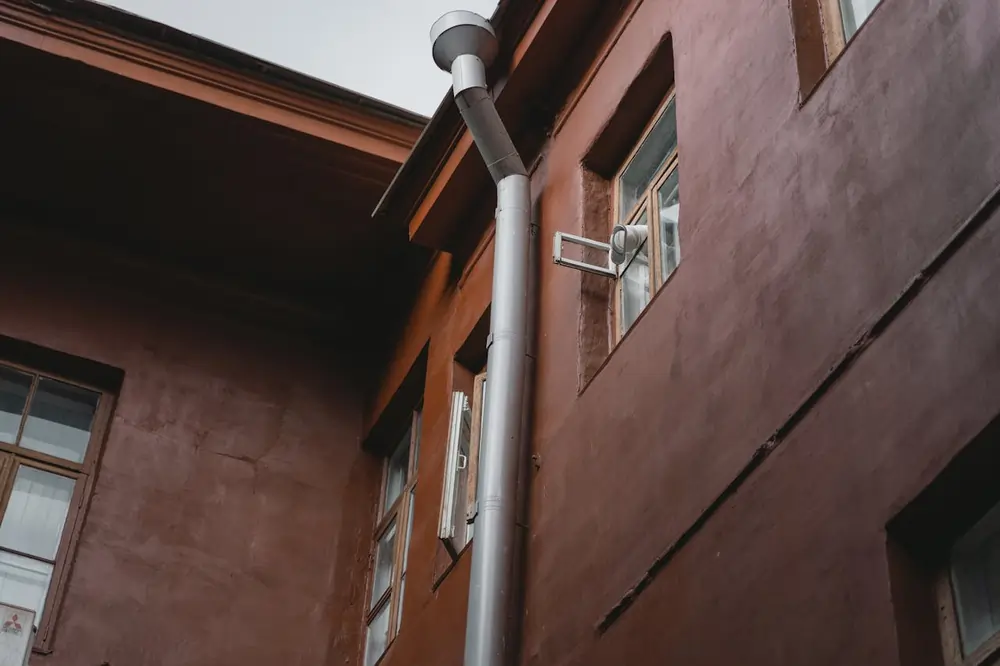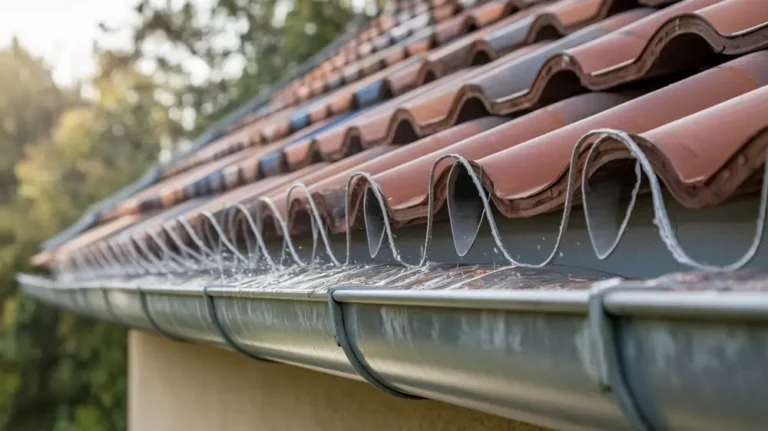Are you tired of water pooling around your home’s foundation? Worried about potential damage to your property? A gutter drainage system might be the solution you’re looking for. This guide will walk you through everything you need to know about these crucial water management systems.
Gutter Drainage System
Did you know that a malfunctioning gutter drainage system is one of the leading causes of foundation damage in homes? It’s true! Managing the flow of water around your house might not seem like a big deal—until you’ve got a flooded basement or water pooling in your yard. That’s where an effective gutter drainage system comes into play.
In this guide, we’ll dive deep into what makes a good drainage system, how to install one, and tips for maintaining it. Whether you’re a DIY enthusiast or a homeowner looking to hire a professional, you’ll find plenty of valuable information here!
What Is a Gutter Drainage System and Why Is It Important?
Ever wondered what a gutter drainage system is and why it’s crucial? It’s all about keeping water away from your home. Using an underground buried downspout system or underground downspout kits, you can easily direct roof runoff away from your foundation. This prevents issues that could affect your home’s foundation.
For diyers, install an underground downspout drainage with corrugated pipe or pvc as an easy diy project. Buried downspouts connect to a drainage pipe, leading to a dry well or storm drain. You can even add a leaf filter or inline catch basin to keep debris out.
For more advanced drainage ideas, consider using a french drain or a pop up emitter to disperse water efficiently. Companies like Sherwood Landscape Construction can help with professional installations if needed. A well-planned gutter downspout system is a top-notch drainage solution for any homeowner.
A gutter drainage system is a network of channels and pipes designed to collect and redirect rainwater away from your home. It’s the unsung hero of home foundation protection, working tirelessly to prevent water damage.
But what happens when this system fails? The consequences can be severe:
- Flooding in basements and crawl spaces
- Soil erosion around your property
- Structural damage to your home’s foundation
In fact, a study by the American Society of Home Inspectors found that over 60% of basements have moisture problems, many of which could be prevented with proper drainage.
Components of a Gutter Drainage System
 If you’re dealing with gutter drainage issues, you might want to check out some gutter drainage solutions like a french drain man or underground downspouts. These can help keep roof water away from around your foundation and prevent water from pooling around your home.
If you’re dealing with gutter drainage issues, you might want to check out some gutter drainage solutions like a french drain man or underground downspouts. These can help keep roof water away from around your foundation and prevent water from pooling around your home.
For a more diy underground approach, you can try an underground gutter drainage system using a three inch pipe to drain away water. Make sure to include a downspout cleanout to avoid blockages, especially during heavy rain. It’s also a good idea to have a roof runoff system to direct water runoff away from your house.
If you’re into tips for gutter drainage, consider installing a rain barrel or adding some sod to cover low spots where water tends to collect. A landscaper can also help if you’re unsure. For more info, check out the frequently asked questions section on underground drainage systems.
Understanding the parts of your roof drainage system is crucial for effective maintenance:
- Gutters: Horizontal channels along your roofline
- Downspouts: Vertical pipes that carry water to the ground
- Splash blocks: Angled pads that direct water away from the foundation
- Underground drains: Pipes that carry water further from your home
Each component plays a vital role in managing rainwater. For instance, did you know that a single inch of rain on a 1,000 square foot roof produces over 600 gallons of runoff? That’s where your gutters come in, channeling this water safely away.
How to Choose the Right Gutter Drainage System for Your Home
Selecting the perfect system isn’t just about aesthetics. Consider these factors:
- Roof size: Larger roofs need wider gutters to handle more water
- Local climate: Areas with heavy rainfall require robust systems
- Home design: Your home’s architecture can influence gutter style
Seamless gutters have gained popularity due to their leak-resistant nature. Unlike sectional gutters, they’re custom-fit to your home, reducing weak points.
But what material should you choose? Here’s a quick comparison:
- Aluminum gutters: Lightweight and rust-resistant
- Vinyl gutters: Affordable and easy to install
- Copper gutter systems: Durable and aesthetically pleasing
Installation Tips for a Proper Gutter Drainage System
Looking to install a proper gutter drainage system? Here are some tips for gutter drainage that will help you out. First, make sure your underground downspouts are set up to direct roof runoff away from your home’s foundation. You can use a three inch pipe to ensure water drains efficiently. A french drain man can help if you run into drainage issues.
For a DIY project, consider a diy underground setup to manage heavy rain. Adding a downspout cleanout can prevent clogs and keep your roof water away from pooling around your foundation. If you’re not sure where to start, check out some frequently asked questions online or consult a landscaper.
Make sure your gutters drain properly by using a rain barrel or installing a grate to manage water runoff. If an error occurred during installation, it might cause water to enter low spots around your home. Proper underground drainage can prevent water from pooling around your house. Finally, don’t forget to check the fitting of your underground gutter drainage to ensure everything is working as it should.
Proper installation is key to an effective roof gutter installation. Here’s a simplified guide:
- Calculate the proper gutter slope (1/4 inch per 10 feet)
- Mark your starting point and ending point
- Install hangers every 2 feet
- Attach end caps and outlets for downspouts
- Connect downspouts and secure them to the house
Remember, a mistake here could lead to big problems down the line. For instance, gutters installed without proper slope can lead to standing water and eventual overflow.
Common Problems with Gutter Drainage Systems (And How to Fix Them)
Gutter drainage systems can be a pain, right? You get almont every season, and those pesky twigs clogging things up. A good funnel can help, and trust me, with thousands of projects under my belt, I know a thing or two.
Don’t forget the shingle gravel that ends up in there. It’s easier to install a mesh guard that can also prevent debris from getting in. And if you need to collect rainwater, a properly placed 12 inches of pvc pipe can make all the difference.
Standing water forming around your foundation? Fixing that is a must to avoid bigger issues down the line!
Even the best systems can face issues. Here are some common problems and their solutions:
- Clogged gutters: Regular cleaning is key. Consider gutter guard installation to minimize debris buildup.
- Sagging gutters: Often caused by loose hangers. Tighten or replace them as needed.
- Improper slopes: Adjust the hangers to achieve the correct slope.
Pro tip: Use a garden hose to simulate rainfall and check for proper drainage.
Gutter Drainage System Maintenance Tips for Longevity
Hey there! Keeping your gutter drainage system in tip-top shape is easier than you think. Start by clearing out any almont and twig debris that might be clogging things up. Using a funnel to guide the water flow can help too.
Trust me, I’ve tackled thousands of projects, and it makes a huge difference. Don’t forget to check for shingle gravel that might be accumulating. Installing a pvc pipe extension is also a great idea; it’s easier to install and can also prevent water from forming around your foundation.
Make sure your downspouts are at least 12 inches away from the house to properly collect rainwater and direct it away from your home. Happy maintaining!
Regular maintenance can extend the life of your system significantly. Here’s a basic gutter maintenance schedule:
- Spring and fall: Full inspection and cleaning
- Summer: Check for damage after storms
- Winter: Remove ice dams if they form
But what if you’re afraid of heights? Consider hiring a professional or investing in gutter cleaning tools with extendable handles.
Enhancing Your Gutter Drainage System with Advanced Solutions
Want to take your drainage to the next level? Consider these upgrades:
- Downspout extensions: Direct water further from your foundation
- Rain chains: A decorative alternative to traditional downspouts
- French drains: Underground pipes that redirect water away from problem areas
Did you know that rain chains can reduce erosion by slowing water flow? They’re not just pretty; they’re functional too!
Gutter Drainage System Costs: What to Expect
Investing in a quality system can save you money in the long run. Here’s what you might spend:
- Basic vinyl gutters: $3-$5 per linear foot
- Mid-range aluminum gutters: $6-$12 per linear foot
- High-end copper gutters: $25-$40+ per linear foot
Remember, these are just material costs. Installation can double these figures, but DIY gutter installation can save you money if you’re handy.
Conclusion
A well-installed and maintained gutter drainage system can save you from costly repairs and protect the structural integrity of your home. From choosing the right materials to performing regular maintenance, managing your gutter system is essential to keep water away from your foundation and prevent damage.
Whether you’re planning to install one yourself or hire an expert, the knowledge you’ve gained from this guide will help you make the best decisions. Now, go ahead and check your gutters! Your house will thank you for it.
A well-designed gutter drainage system is crucial for protecting your home from water damage. By understanding its components, choosing the right system, and maintaining it properly, you can ensure your home stays dry for years to come. Ready to take the next step in protecting your home? Start by assessing your current system today!
Got more questions or want to share your own gutter system hacks? Drop them in the comments!



